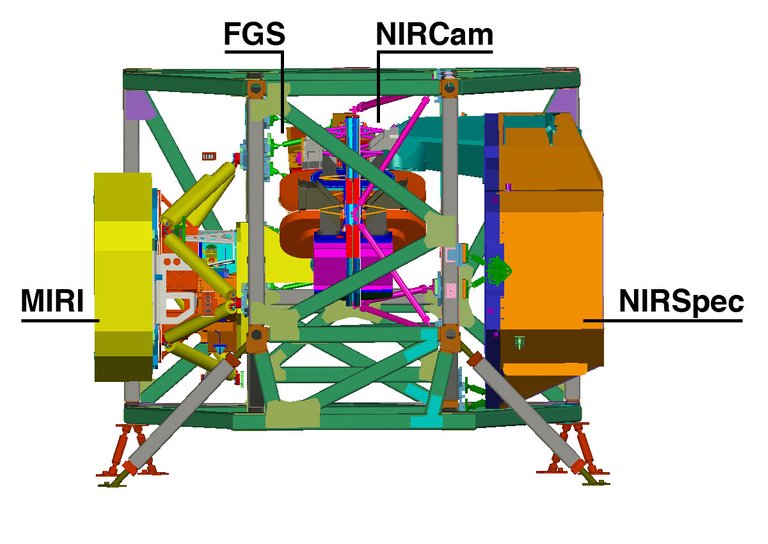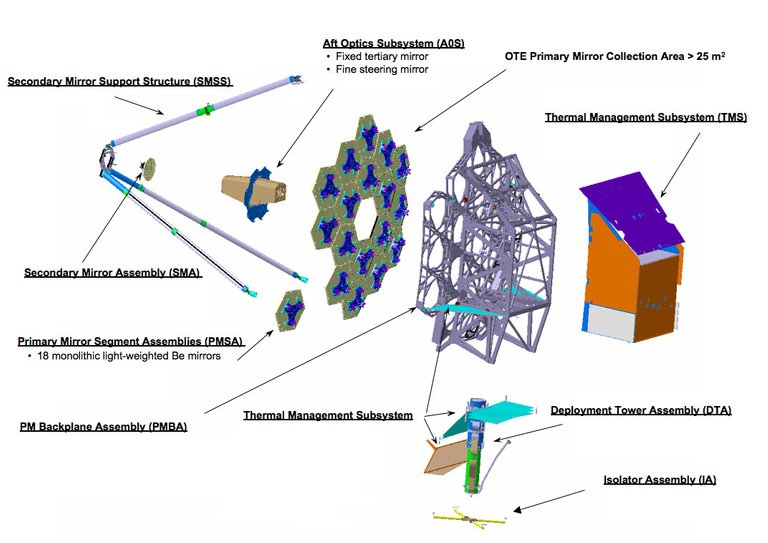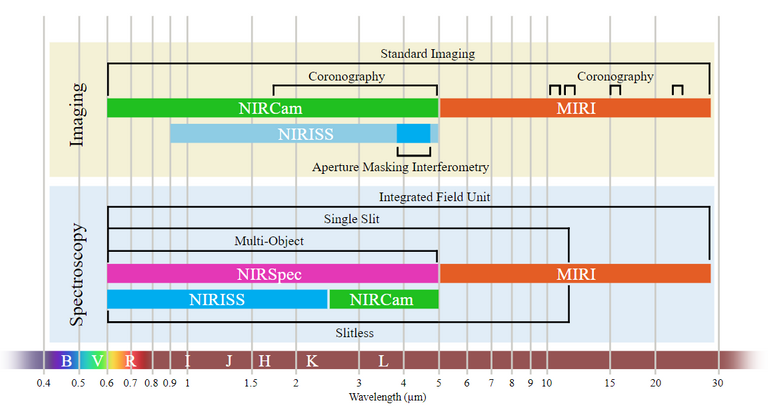Introduction
After my recent post on what we expect to learn from the James Webb Space Telescope, I became interested in learning more about the space telescope. More specifically, I began reading about its components and how they operates as well as the specifications of the images it will be collecting.
I thought it would be fun to share what I have been learning with a series describing how the space telescope will operate. For the first article, I will be providing an overview on the JWST by summarizing its three elements.
The Integrated Science Instrument Module

The Integrated Science Instrument Module (SIM) consist of the four cameras in the telescope. Altogether, the SIM will be collecting light within the range of .6 and 28.3 microns. In the upcoming post we will be taking a look at each of the four camera separately, what each one will be observing and some simulated data from them!
Above is a diagram of the range different modes of each camera will be able to measure. Understanding the differences between them will be a major aspect of differentiating between the functionalities of the four cameras.
The Optical Telescope Element

Once we develop a better understanding for the cameras we will be ready to discuss the OTE in more detail.
Spacecraft Element
The Spacecraft Element makes up the bulk of the telescope and includes all of the steering and regulatory systems of the telescope. Once the telescope begins its observations, the spacecraft element will be needed for everything from communicate with us, monitoring its power supply, orientating the observatory, and maintaining a constant temperature for the observatory.
Once we start learning about the workings of the spacecraft element we will begin to develop an understanding for the processes going on within the telescope which make the whole thing possible.
If you would like to learn more about the James Webb Space Telescope, feel free to take a look at my previous article on what we expect to learn from it! https://steemit.com/science/@thequantumknight/the-james-webb-telescope-telescope-looking-forward-into-seeing-the-past
If you have any questions or know anything you would like to add feel free to do so in the comments! Or if you have any suggestions on how I can improve I would love to hear them!
If you enjoyed my content, please consider upvoting to help others find my content or you can follow me if you would like to hear more!
Work Cited:
https://jwst.nasa.gov/isim.html
https://jwst.nasa.gov/ote.html
https://jwst.nasa.gov/bus.html
https://jwst.stsci.edu/instrumentation

@mrainp420 has voted on behalf of @minnowpond. If you would like to recieve upvotes from minnowpond on all your posts, simply FOLLOW @minnowpond. To be Resteemed to 4k+ followers and upvoted heavier send 0.25SBD to @minnowpond with your posts url as the memo
@originalworks
To call @OriginalWorks, simply reply to any post with @originalworks or !originalworks in your message!
For more information, Click Here! || Click here to participate in the @OriginalWorks writing contest!
To enter this post into the daily RESTEEM contest, upvote this comment! The user with the most upvotes on their @OriginalWorks comment will win!Special thanks to @reggaemuffin for being a supporter! Vote him as a witness to help make Steemit a better place!
Congratulations @thequantumknight! You have completed some achievement on Steemit and have been rewarded with new badge(s) :
Click on any badge to view your own Board of Honor on SteemitBoard.
For more information about SteemitBoard, click here
If you no longer want to receive notifications, reply to this comment with the word
STOP